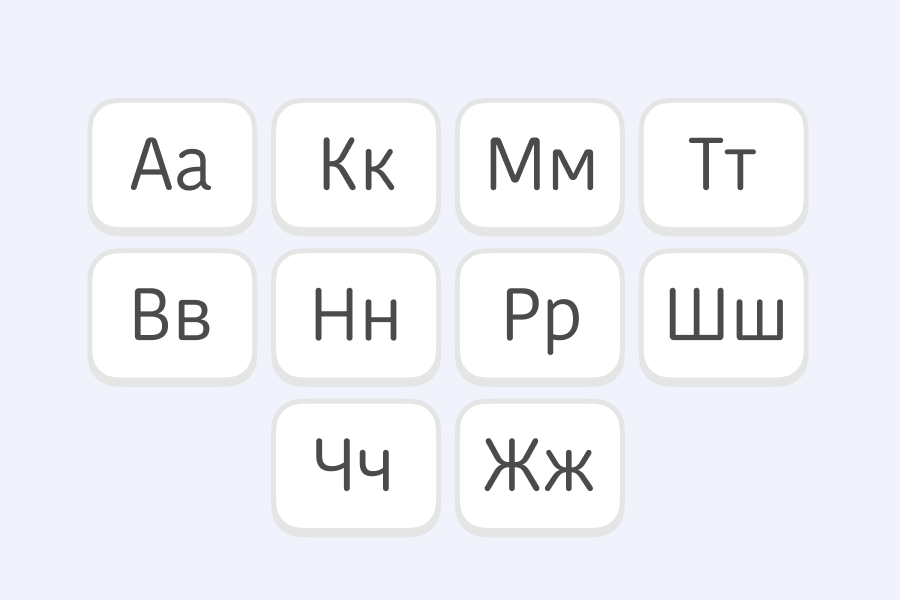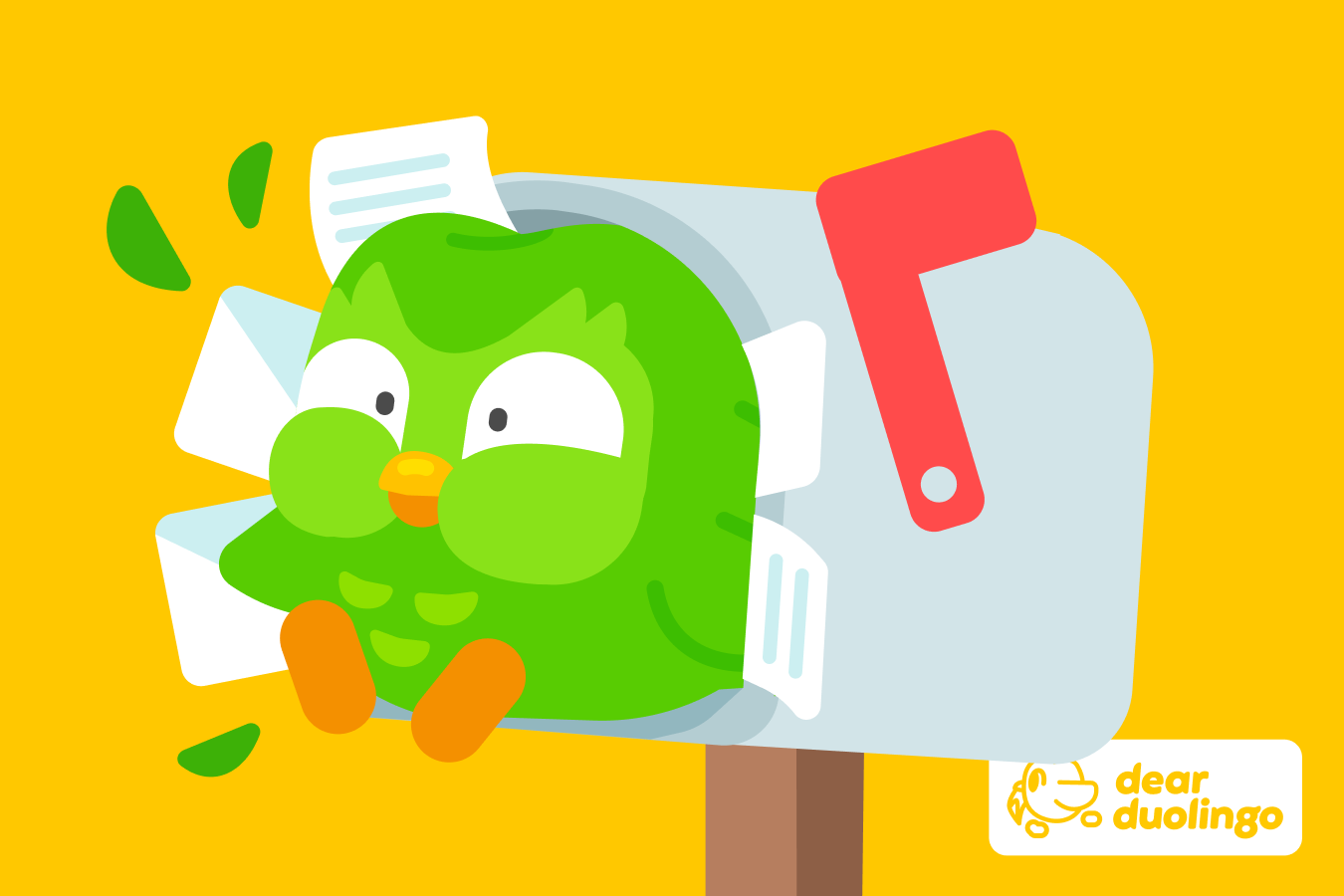May 24th marks Cyrillic Alphabet Day which is a special day for all the language lovers at Duolingo and for the nearly 250 million speakers of languages that use the Cyrillic script. Started in Bulgaria, it now serves as the official script for nearly 50 languages, including Russian, Serbian, Ukrainian, and Uzbek! If you’re interested in learning any of these languages or if you’re just generally curious about the Cyrillic script and its rich history, we’ve got you covered!

Where did the Cyrillic script come from?
The Cyrillic script itself has gone through many tweaks, transformations, and iterations that have led to the letters we see today. This varied history begins in ninth century Bulgaria with Saint-Czar Boris I, who wanted Bulgarians to adopt Christianity without sacrificing their language and culture. Back then, religious texts were only available in Greek, the language of Boris’s neighbors in the Byzantine empire. If he could find a new script for Slavic languages, Boris could have religious texts translated, and Bulgarians could practice Christianity in their mother tongue. Cue Cyril and Methodius!
These scholars, and brothers, had recently created a script in Great Moravia which was exactly what Boris was looking for. This wasn’t the Cyrillic script we know today—it was called the Glagolitic script, which looks pretty different from modern Cyrillic! We know that Boris welcomed disciples of Cyril and Methodius into the Bulgarian Empire to start literary schools using the Glagolitic script… but then the record becomes fuzzy. It’s not exactly clear who went on to create the Cyrillic script, but we do know that it emerged from these literary schools, borrowing from Greek for many letters and from Glagolitic for specifically Slavic sounds.

What does the Cyrillic alphabet look like today?
You might notice that several Cyrillic letters look and sound extremely similar to letters in the Latin alphabet. This is because both alphabets borrowed some letters from Greek! Take these letters, for example:
| Cyrillic | Latin | Greek | IPA |
|---|---|---|---|
| Аа | Aa | Αα | /a/ |
| Кк | Kk | Κκ | /k/ |
| Мм | Mm | Μμ | /m/ |
| Тт | Tt | Ττ | /t/ |
Be careful, though! Many Greek-derived letters are false friends. Some letters may come from the same or similar-looking Greek letters, but after years of use and transformation, they’ve come to represent different sounds in the Cyrillic and Latin alphabets. For example:
| Cyrillic | Latin | IPA |
|---|---|---|
| Вв | Vv | /v/ |
| Нн | Nn | /n/ |
| Рр | Rr | /r/ |
Other letters don’t have a totally similar-looking Latin counterpart. Some of these, such as Шш, Чч, and Жж derive from the Glagolitic script and might present a bit more of a challenge at first glance.
| Cyrillic | Glagolitic | IPA | Sounds like… |
|---|---|---|---|
| Шш | Ⱎ | /ʃ/ | Sh in sheep |
| Чч | Ⱍ | /ʧ/ | Ch in chair |
| Жж | Ⰶ | /ʐ/ | Similar to the g in genre or the s in Asia |
(Psst: if you want a quick refresher on the International Phonetic Alphabet, or IPA, check this out.)
Which languages use the Cyrillic script?
After Boris’s son Simeon I officially adopted the newly minted Cyrillic script for Bulgarians in 893, it took off! Today, nearly 50 languages throughout parts of Eastern Europe, Central Asia, and Siberia use Cyrillic as their official script. Cyrillic is usually associated with Slavic languages like Russian and Bulgarian, and though the original script was designed for languages in this family, it isn’t a firm rule. For example, some Slavic languages like Czech, Slovak, and Polish use the Latin alphabet while other non-Slavic languages like Tajik, Tatar, and Mongolian use the Cyrilic script!
With so many languages that contain so many unique sounds using this script, there is no "one size fits all" set of letters that can satisfy everyone. Just like how in Spanish, you'll see ñ, and in French, you'll see ç, you'll find some symbols in the Cyrillic script that show up in some languages' alphabets and not others! Here two of my favorites:
| Cyrillic | IPA | Languages | Sounds like... |
|---|---|---|---|
| Ҕҕ | /ɣ/ | Abkhaz and Sakha | Similar to the gh in ugh! |
| Њњ | /ɲ/ | Serbian and Macedonian | Similar to the ny in canyon (or the Spanish ñ) |
How can I learn the Cyrillic script?
Cyrillic can look daunting at first, especially when you see a lot of unfamiliar characters all at once, but don’t be discouraged! Cyrillic has a finite number of letters that you can match to their corresponding sounds in small batches. A great place to start learning is Duolingo’s own Ukrainian and Russian courses! In either of these courses, you can start off with our writing system learning tools that help you study familiar letters, false friends, and less familiar Greek- and Glagolitic-derived characters.
Another good way to practice is by writing words in your first language with Cyrillic letters. I have many a high school notebook filled with my name doodled as Паркер. Try using Cyrillic letters to write your name! And if you want to go the extra mile, you can add some Cyrillic stickers to your keyboard to practice typing. If this seems too tricky, many computers have a phonetic keyboard option, so you don’t have to remember where new sounds fit on your Latin-alphabet keyboard. Ultimately, like learning most things, improvement comes with extended exposure and practice. Keep up your Duolingo streak in Ukrainian or Russian, and you’ll be reading and writing in Cyrillic in no time!



